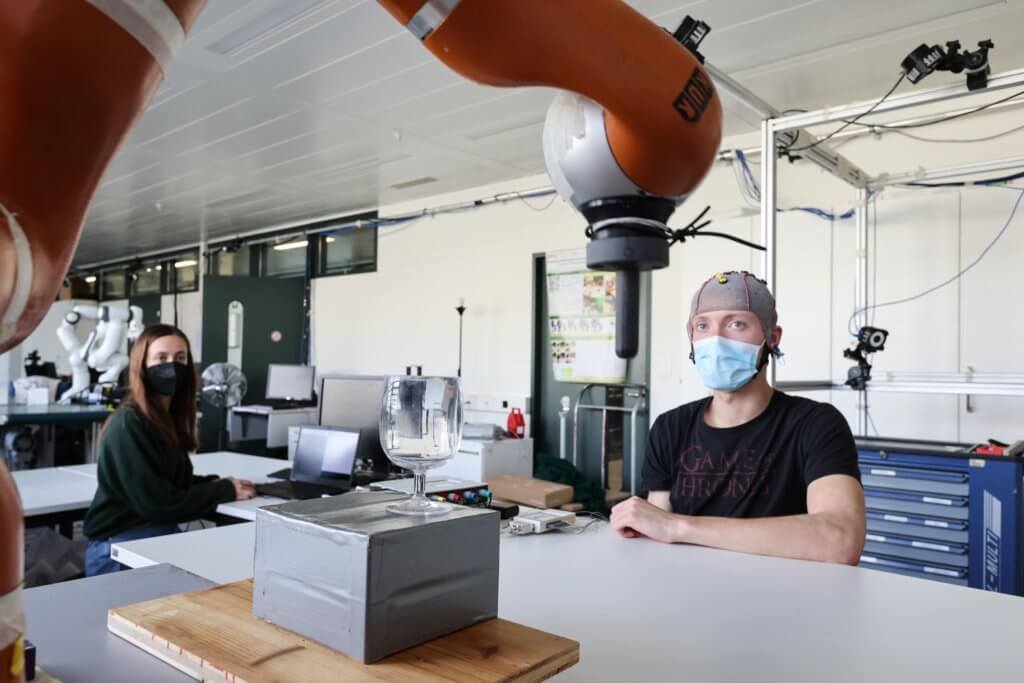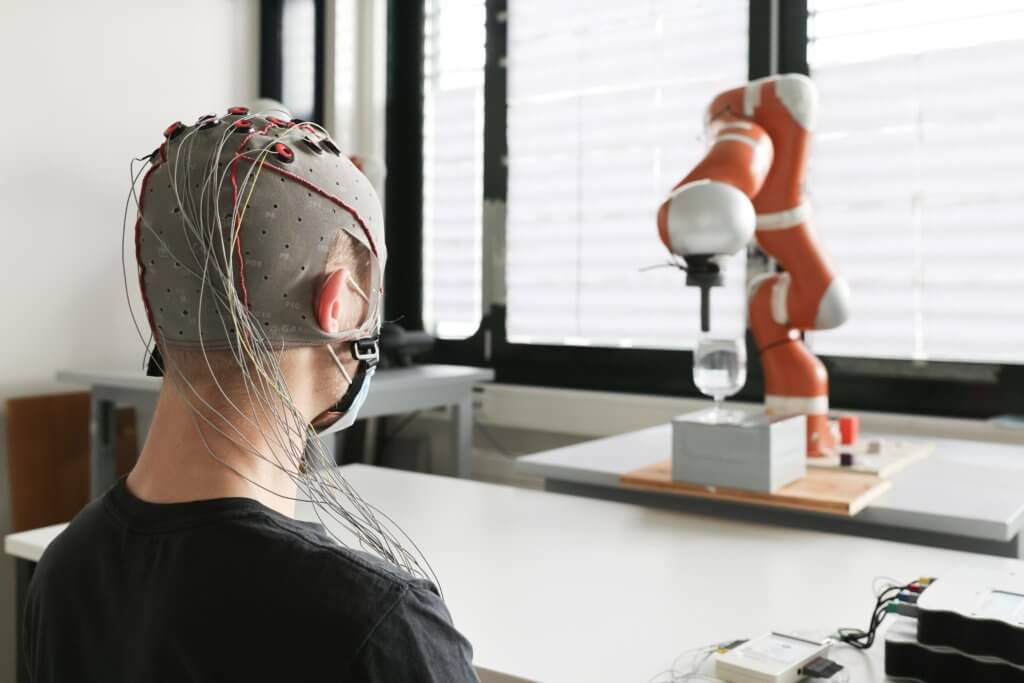Fear not, robots are not one step closer to controlling our minds. Instead, scientists are developing robots that are able to be controlled solely by the human mind. While turning the channel without moving a muscle sounds tempting, this progress could change lives.
EPFL is a university based in Switzerland. Two research groups from EPFL have teamed up to develop a machine-learning program that can be connected to a human brain and used to command a robot. Prisoners of their own bodies, tetraplegic patients are unable to speak or perform the smallest of movements that most of us take for granted. For years, scientists have worked tirelessly to create a device that would allow tetraplegic patients to carry out some tasks on their own.
“People with a spinal cord injury often experience permanent neurological deficits and severe motor disabilities that prevent them from performing even the simplest tasks, such as grasping an object,” says Prof. Aude Billard, the head of EPFL’s Learning Algorithms and Systems Laboratory, in a statement. “Assistance from robots could help these people recover some of their lost dexterity, since the robot can execute tasks in their place.”

This device first began with a robotic arm, which had already been developed. The robotic arm was then programmed to move to the left or right, avoiding obstacles in its way. Slowly and meticulously, engineers worked to tweak the programming in order to improve the speed and movement of the arm.
The purpose of creating such a robot is to improve the lives of tetraplegic patients, so it was imperative throughout development that the robot was able to fulfill its function without any manipulation or communication. This necessitated creating a specific algorithm which would require only a patient’s thoughts. The researchers then connected the algorithm to a headcap, which was worn by patients throughout the study. The algorithm was connected to a headcap equipped with electrodes for running electroencephalogram (EEG) scans of a patient’s brain activity.
In order to perform the task, patients needed only to look at the robot. As researchers observed the movement of the robotic arm, the algorithm was changed based on whether the robot was able to perform the function or was given an error message. The process continued through trial-and-error, until the robotic arm was able to avoid the obstacle. By the fifth try, the robot was usually able to perform the function solely using the patients’ thoughts.
Advancement starts with a simple robotic arm, but researchers will not stop at that. The ultimate goal is to create wheelchairs using the algorithm. “For now there are still a lot of engineering hurdles to overcome,” says Prof. Billard. “And wheelchairs pose an entirely new set of challenges, since both the patient and the robot are in motion.” While there is still more to come, the progress of this algorithm has removed one obstacle for tetraplegic patients by learning to avoid it.
This research is published in the journal Communications Biology.












